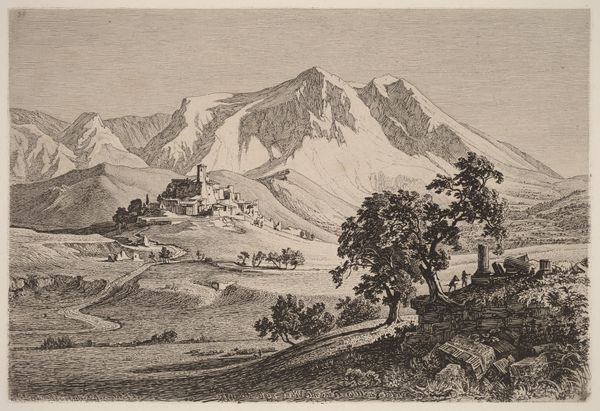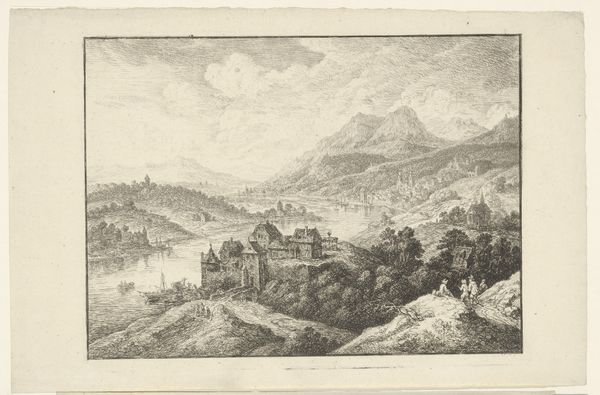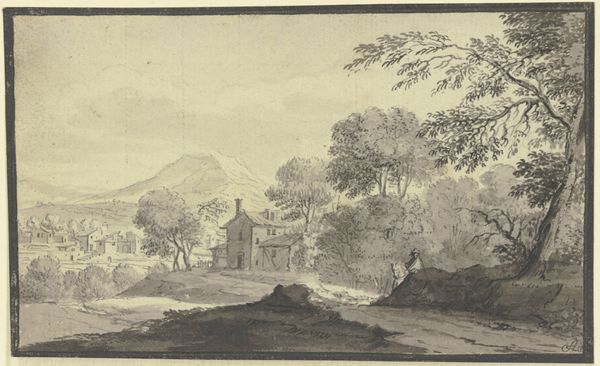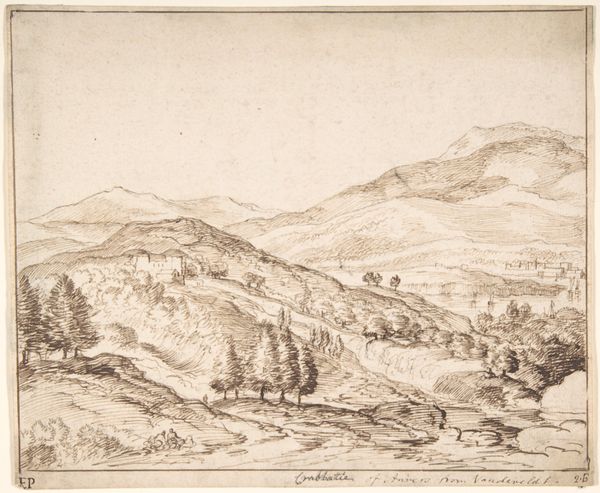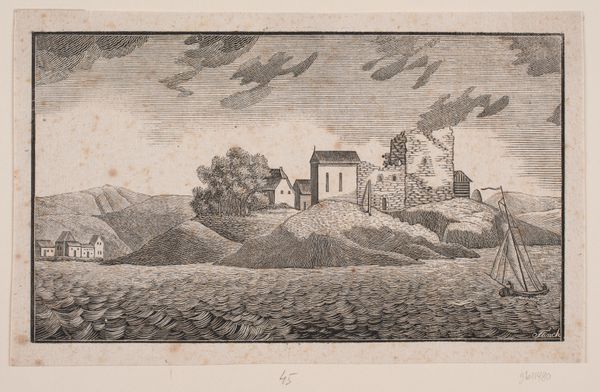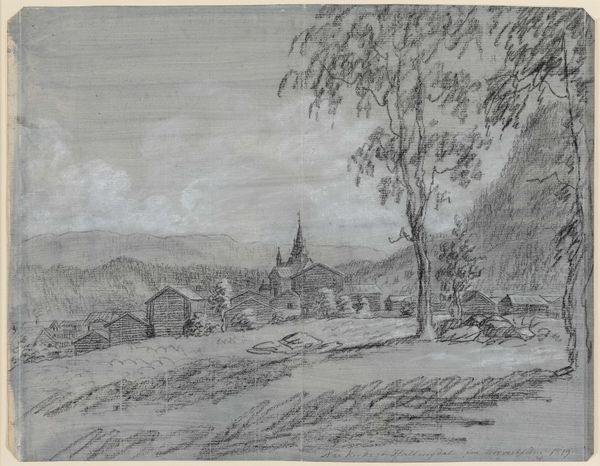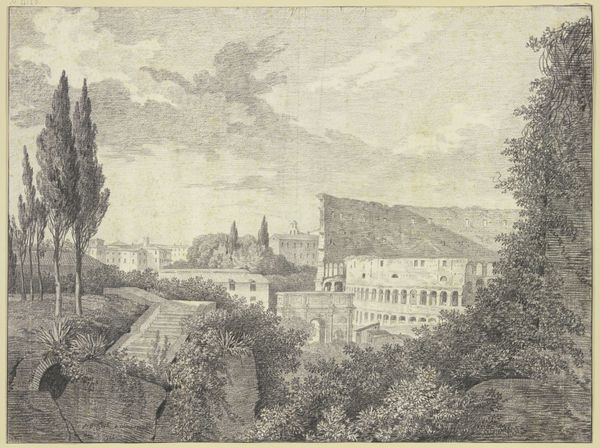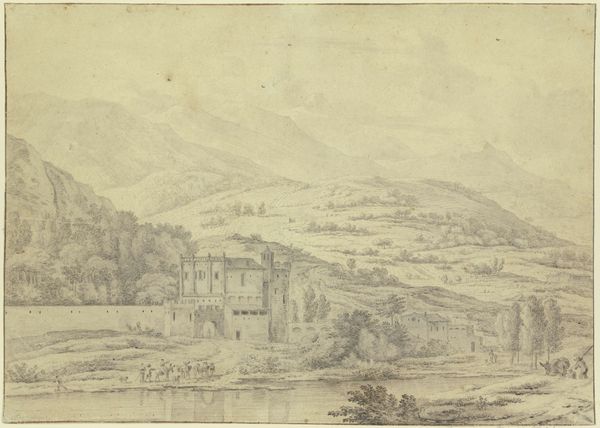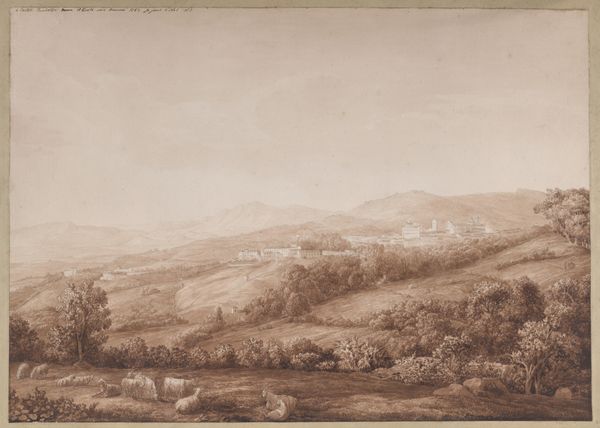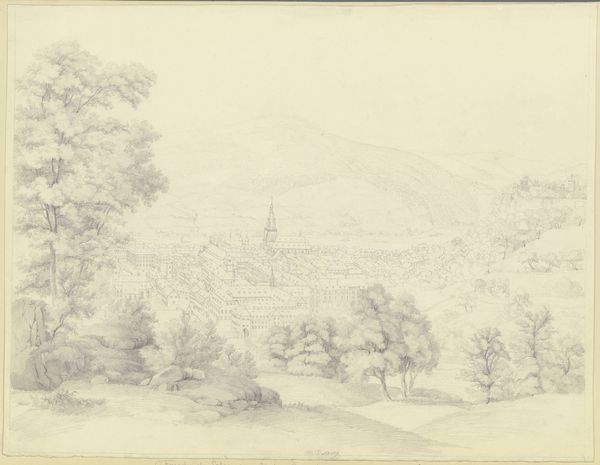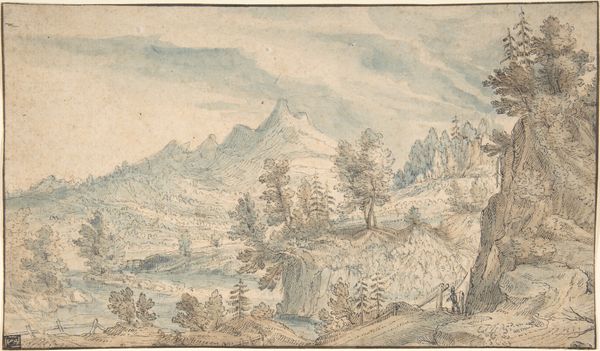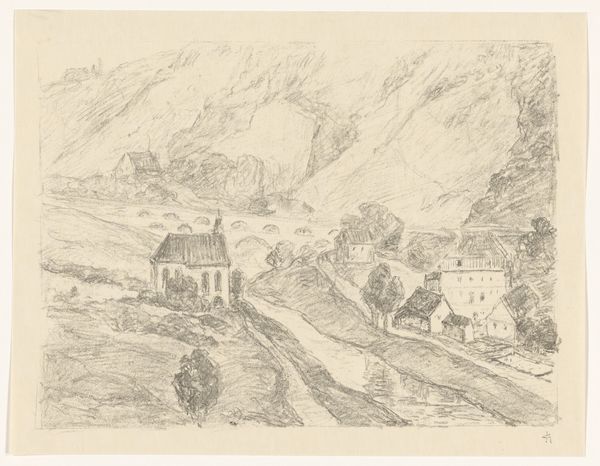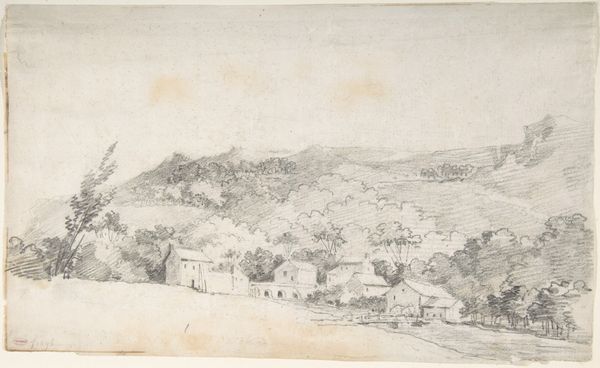
Mountaineous Landscape with a Church and Other Buildings 17th century
0:00
0:00
drawing, print, paper, graphite
#
drawing
# print
#
landscape
#
paper
#
graphite
Dimensions: Sheet: 5 7/8 × 8 5/16 in. (15 × 21.1 cm)
Copyright: Public Domain
Curator: What a delicately rendered scene! This is "Mountaineous Landscape with a Church and Other Buildings," an anonymous 17th-century work, rendered in graphite on paper, here at the Metropolitan Museum. Editor: There's a stark contrast in the textures, isn't there? The wispy trees against the solid forms of the church and the distant mountains…it creates a captivating visual tension. Curator: Absolutely. These landscape drawings became increasingly popular during the 17th century, mirroring the rise of a mercantile class that increasingly looked towards idealized representations of nature as status symbols and aesthetic fulfillment. Prints like this offered broader access to landscape imagery, moving art outside ecclesiastical or aristocratic circles. Editor: The use of line is interesting here, isn’t it? Notice the almost frantic hatching to establish shadows and volumes versus the smoother tones defining the sky. It’s as if the artist sought to mimic atmospheric perspective purely through texture. Curator: It speaks to an evolving understanding of space and how it's visually interpreted. I see this not only as observation of landscape but a reflection of societal changes. Art production and distribution was reshaped by emergent commercial networks. Images reproduced on paper held value in their accessibility and ability to travel and educate a broader segment of society. Editor: The eye is directed carefully—first to the detailed, grounded structures, leading up to the ethereal mountain range in the distance. One is invited to mentally journey into an unfamiliar space and consider our scale as viewers relative to this topography. Curator: I agree. Consider how this relatively affordable art contributed to an emergent visual culture, shaping not just taste but potentially civic identity through shared visual experiences. Editor: Seeing the church tower nestled into that mountain range, in the end it does present nature and human achievement, maybe, not as opponents but as components of something complete. Curator: Precisely! It shows an increasingly shared culture, built with the images circulating between viewers, then and today.
Comments
No comments
Be the first to comment and join the conversation on the ultimate creative platform.

